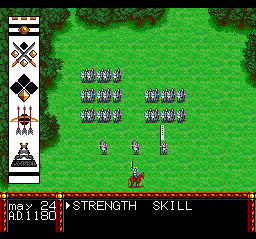

In England, worried about the possibility of a Catholic plot against her, Elizabeth I imprisoned Mary and later, after almost 19 years of captivity, had her executed at Fotheringhay Castle in Northamptonshire in 1567 at the age of 44. Her reign was marked by Catholic-Protestant conflict and civil unrest in a period known as the ‘rough wooing’. Mary, newly born at Linlithgow Palace, was just six days old when her father, James V, died and she was crowned Queen of Scots. The cultural, intellectual and artistic movement that took hold around Europe brought significant changes to Scotland education, intellectual life, literature, art, architecture, music and politics all advanced in the late 15th century. For more information visit the National Records of Scotland. Though its effect was largely symbolic, the powerful declaration remains an important document in Scottish history – many historians believe it inspired America’s founding fathers to write the United States Declaration of Independence. Fighting continued until 1314 at the Battle of Bannockburn, where Robert the Bruce and his army defeated Edward II, a major turning point in his rule.Ī letter written in Latin, signed by Scottish Barons and Nobles, and sent to Pope John XXII, the Declaration proclaimed Scotland’s status as an independent sovereign state. Unrest continued into the 14th century when Robert the Bruce took the throne and was crowned king. Robert the Bruce crowned King of Scotland It was here one of Scotland’s most famous figures, William Wallace, earned his place in the history books forever. In 1297, Edward’s army planned to cross the River Forth at Stirling Bridge the Scots seized the opportunity to attack at the crossing of the River Forth, the Stirling Bridge, forcing the English army to retreat.

Corporations like feudal kingdoms film series#
England’s monarch, Edward I, believed he should be recognised as overlord of Scotland and his troops marched north in a series of bloody sieges. During the reigns of Alexander II and then Alexander III, more land was turned over to agriculture, trade with the continent bolstered the economy and monasteries and abbeys grew and flourished around the country.Ī succession crisis brought unrest to Scotland after the death of Alexander III. The Treaty of Falaise, signed by William I, ushered in a period of relative peace in Scotland.

In the 12th century the Kingdom of Alba continued to grow and became a feudal society. Macbeth ruled as King of Alba from 1040 to his death in battle in 1057. Immortalised forever in Shakespeare’s fictitious retelling, Macbeth is perhaps one of the best-known early Scottish kings. While Vikings began to settle in the west, the Picts were forging a new kingdom the Kingdom of Alba. Vikings were accomplished seamen at this point in history, and around 800 AD they began migrating from Norway and Denmark, crossing the treacherous North Sea to trade and settle in Scotland. Much of the 60km Antonine Wall survives and it was inscribed as a World Heritage Site, one of six in Scotland, since 2004. Unable to defeat the Caledonians and Picts, the Romans eventually withdrew and over time retreated away from Britain. Despite building two impressive fortifications – Hadrian’s Wall to defend the northern border, and the Antonine Wall across Central Scotland to advance it forward – the Romans never truly conquered Caledonia. Scotland’s recorded history began with the arrival of the Roman Empire. The remains of domestic and ritual buildings from this time make up The Heart of Neolithic Orkney World Heritage Site. The earliest prehistoric tools found still surviving in Scotland date from 3000 BC – during the Neolithic age Scotland was home to nomadic hunter-gatherers as well as the first farmers who built permanent dwellings. Hunter-gatherers hunted for fish and wild animals and gathered fruit, nuts, plants, roots and shells. The period of earliest known occupation of Scotland by man is from the Palaeolithic era – also known as the Stone Age. Scotland has experienced extraordinary growth and change during the course of its lifetime - it’s a place that has been invaded and settled many times and that has made mighty contributions to culture and society.Įxplore thousands of years of people and events with our timeline that highlights some of the most significant moments in Scotland’s fascinating history. The history of Scotland is fascinating and complex there are Roman soldiers, Vikings, noble clansmen, powerful ruling monarchs and even enlightened philosophers.


 0 kommentar(er)
0 kommentar(er)
